For many football fans, part of the joy of travelling to watch their team play comes not just in actual football but in the pleasure of visiting different stadiums. The match day experience each stadium offers is different, so some are better to visit than others.
But which are the best football stadiums to visit?
There are a wealth of excellent grounds around the United Kingdom, Europe and, indeed, the world, that offer so much more than just what takes place on the field in front of supporters. Being able to add in a tour of such a stadium or a visit to a museum can enhance a trip immeasurably.
Sometimes the pleasure comes from the fact that the football ground in question offers a brilliant atmosphere before, during and after a match, whilst others are all about what else you can do in addition to watching your favourite sport.
If you take football rivalries out of the conversation then you’ll doubtless find that even some of the clubs you’ve grown up to hate have stadiums that offer something to the sport as a whole.
THE NOU CAMP – Barcelona
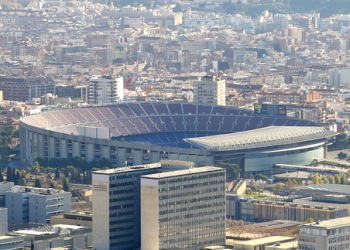
The home of Barcelona is not only an impressive place to watch football because of the size of the ground, though the fact that it is the largest stadium in Europe certainly helps, but also because of how much it represents the people of the city and the surrounding area. Barcelona’s motto is més que un club, or ‘more than a club’, and you get a sense of that when you spend time in the Nou Camp and surrounding area.
The museum at the stadium is the most visited museum in all of Catalonia, which tells you that there is plenty to see there on top of just football memorabilia. Considered to be a ‘temple of football’, Camp Nou first opened in 1957 and has undergone numerous renovations since then. A sign of its cultural importance can be found in the fact that has been used for other purposes, such as when John Paul II hosted mass for more than 121,500 people there in 1982.
ANFIELD – Liverpool
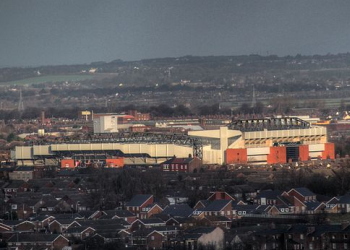
Home of Liverpool Football Club, the most successful side in British footballing history, Anfield is no longer the hot bed of vociferous support for the home side that it once was. That being said, it has hosted some memorable matches in the modern era, such as when the Reds defeated Borussia Dortmund 4-3 in the Europa League in 2016 or when they came back from a 3-0 first-leg deficit in the semi-final of the Champions League in 2019 to win 4-0.
The ground itself has plenty to offer visitors, including a museum that houses all of the European Cups that the team has won over the years as well as a memorial to the 96 supporters that lost their lives at the Hillsborough disaster in 1989. The stadium was originally the home of Merseyside rivals Everton, with the Blue team in the city moving to nearby Goodison Park that you could also fit a visit to if you have time. It’s Anfield that boasts success within its walls, however.
OLD TRAFFORD – Manchester
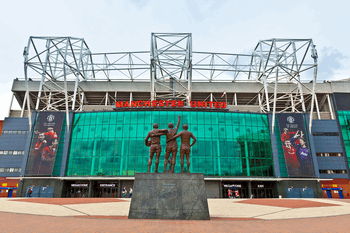
As proof that you need to put footballing rivalries aside when discussing the various merits of a football stadium, Old Trafford is another ground that is worth your time visiting once you’ve been to Anfield. The club that the stadium houses might not be everyone’s cup of tea, but there’s no questioning the fact that the ground itself has hosted some excellent football matches over the years and has been renovated a number of times.
The stadium opened its doors in 1910 and underwent renovations in the mid 2000s, though as it currently is it is in desperate need of a lick of paint in numerous places. The stadium tour is well worth doing, as is a visit to the on-site museum where you can learn about the Busby Babes and the Munich Air Disaster. Alex Ferguson is the club’s most successful manager, so a photograph alongside the statue of the Scot is a must for many.
SAN SIRO – Milan
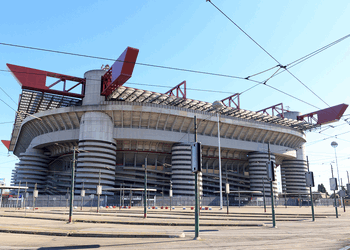
Officially known as the Giuseppe Meazza Stadium, Milan’s San Siro is worth visiting if for no other reason than to figure out how a football ground can successfully house not one but two major teams from the same city. Internazionale and AC Milan both call the ground their home, meaning that the atmosphere on the day of a derby is second to none, not only inside the stadium but all around the city too.
There’s room for more than 75,000 people inside the ground, which opened in 1925. The outside of the venue is iconic in and of itself, with swirling pillars and distinctive corners. It was designed in such a way so as to mean that spectators can see the pitch clearly regardless of where they find themselves, which means that it’s an absolute pleasure to watch a match from within the famous old ground.
Maracanã – Rio de Janeiro
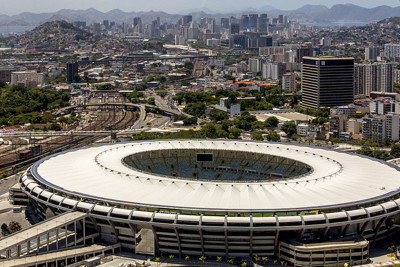
Rio de Janeiro is a vibrant, exciting city to spend time in and the stadium that is located in it reflects the place in many ways. Rio is one the largest settlements in Brazil, housing nearly seven million people, many of whom live far from the Copacabana beach in the Favelas that are found on the edge of the city. The Maracanã was built in the 1940s and the year that it opened saw a record attendance of 199,854 turn up to watch a match, reflecting the city’s own crowded nature.
It is a thrilling venue to visit, even if it has lost some of the originality thanks to numerous renovations that were carried out in 2000s. It is still an imposing and impressive football ground, though, which is why it chosen as the venue for any major sporting events that take place in Brazil such as the World Cup or the Summer Olympics. Only the Estadio Monumental in Peru is larger in the entirety of South America, but that ground doesn’t boast anywhere near the same level of history as the Maracanã.
SIGNAL IDUNA PARK – Dortmund
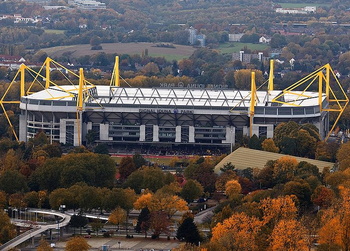
There are many impressive stadiums in Germany, as you might imagine, but few are able to compete with Signal Iduna Park when it comes to spectacle. Home to Borussia Dortmund, the Südtribüne boasts what is known as the ‘Yellow Wall’, with nearly 24,500 fans able to fit inside the terrace. During the 2015-2016 season, more than 81,000 fans attended each game on average, setting a record for attendance and making clear why it’s well worth a visit.
The Westfalenstadion is known for the impressive atmosphere that fans can create, though it’s entirely different from the sort of atmosphere that English football fans would be used to. Instead of ebbing and flowing with the nature of the game, fans make a constant noise throughout the match. As well as touring the stadium, you can also take a trip to the trophy museum and see the likes of the Bundesliga trophies that the club has won over the years. Arrive pre-match and, just like at Anfield at Celtic Park, you’ll hear a rendition of You’ll Never Walk Alone.
CELTIC PARK – Glasgow
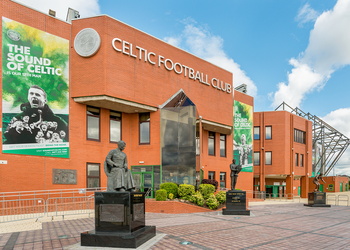 Scotland isn’t short of an impressive stadium or two, but Celtic Park is the one that takes the crown. Though Rangers fans would never admit it, the home of their most vociferous rivals is one of the most impressive stadiums in the world. In addition to the phenomenal atmosphere provided by the home fans, a section of whom are now able to be housed in a safe-strafing section of the ground, the ground is also the eighth largest in the United Kingdom.
Scotland isn’t short of an impressive stadium or two, but Celtic Park is the one that takes the crown. Though Rangers fans would never admit it, the home of their most vociferous rivals is one of the most impressive stadiums in the world. In addition to the phenomenal atmosphere provided by the home fans, a section of whom are now able to be housed in a safe-strafing section of the ground, the ground is also the eighth largest in the United Kingdom.
Known to supporters as Parkhead of Paradise, the ground was opened in 1892 and at one point was able to house as many as 83,500 supporters. When Hampden Park isn’t available to host international matches or cup finals it is Celtic Park that the Scottish football authorities turn to, which tells you something about the esteem in which it is held. It’s often forgotten that Celtic won the European Cup in 1967, but you can have a look at the trophy whilst you’re there.
THE EMIRATES – London
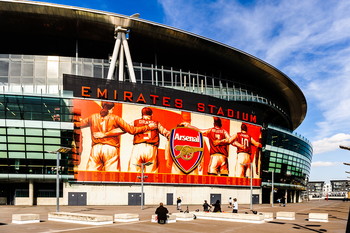
When Arsenal decided to leave Highbury, it was feared that they would be leaving behind a wealth of history and an iconic stadium. Though that is most certainly true, the Emirates stadium is an equally impressive venue to visit and is a great place to watch football. Known as Ashburton Grove before it was sponsored by an airline and referred to Arsenal Stadium when hosting UEFA competitions, it opened in 2006 and can host more than 60,000 supporters.
League success might well have abandoned the Gunners since they left Highbury, but there can be no arguing that the Emirates isn’t a great place to watch football thanks to the modern standard of seating and the manner in which the ground has been designed. The on-site museum underwent a complete renovation before re-opening in 2016, showcasing the club’s history since it was founded in Woolwich in 1886. One of the things you’ll be able to see is the gold Premier League trophy, awarded when they went a season unbeaten.
THE ALLIANZ ARENA – Munich
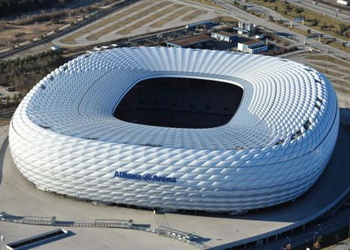
Bayern Munich have called the ground their home since the start of the 2005-2006 season, having previous played at the Munich Olympic Stadium. For a time, the ground also housed 1860 Munich until their rental agreement was terminated in 2017. The museum is the biggest such museum in Germany, which isn’t overly surprising when you realise that it needs to house all of the trophies that the club have won over the years.
TOTTENHAM HOTSPUR STADIUM – London
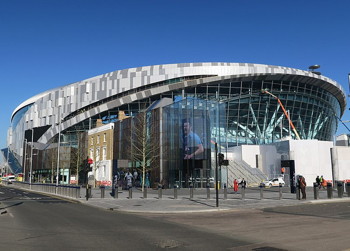
Given the relatively youth of this stadium, which only opened in 2019, it might seem a little strange to have it on this list. Yet it is that youth that, in many ways, ensured its position here. It is incredibly modern and brilliantly designed, ensuring that supporters have a brilliant view of the pitch irrespective of where they find themselves sat. The bowl-design allows for a brilliant atmosphere, whilst the South Stand rivals Dortmund’s Yellow Wall in terms of housing 17,500 fans in a single tier.
The ground was built with the idea of being able to house American Football matches as well as Spurs games in mind, meaning that there are separate facilities for teams from the two sporting disciplines. The Goal Line Bar in the South Stand is 65 metres in length, making it the longest in Europe and therefore well worth a visit for those that enjoy a pint at half-time. The stadium is an impressive and imposing one but also one that remains true to the club’s spirit, which is why it’s somewhere all football fans should go at least once.
La Bombonera – Buenos Aires
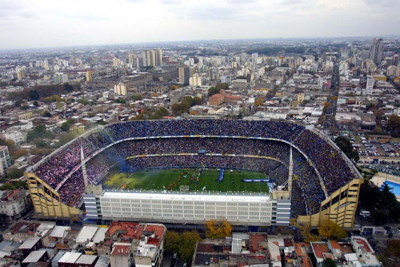
If British football stadium designers would like to get an idea of how to pack a big punch into a small package then a trip to La Bombonera should definitely be on their list. Officially known as the Alberto J. Armando Stadium, it is known as La Bombonera, which translates as ‘the chocolate box’, because of its shape. There is one ‘flat’ stand along one side of the pitch and the other three are steep enough to make your stomach turn.
Owned by Boca Juniors, the stadium was declared of public interest by the Government of Buenos Aires autonomous city, which gives you an idea of how iconic it is. It’s far from the largest stadium on the list, but if you want to think about which stadiums you should visit then it would be madness not to have this one at the forefront of your mind. There are few places in world football that offer the experience of watching a football match that you get from a visit to La Bombonera.
